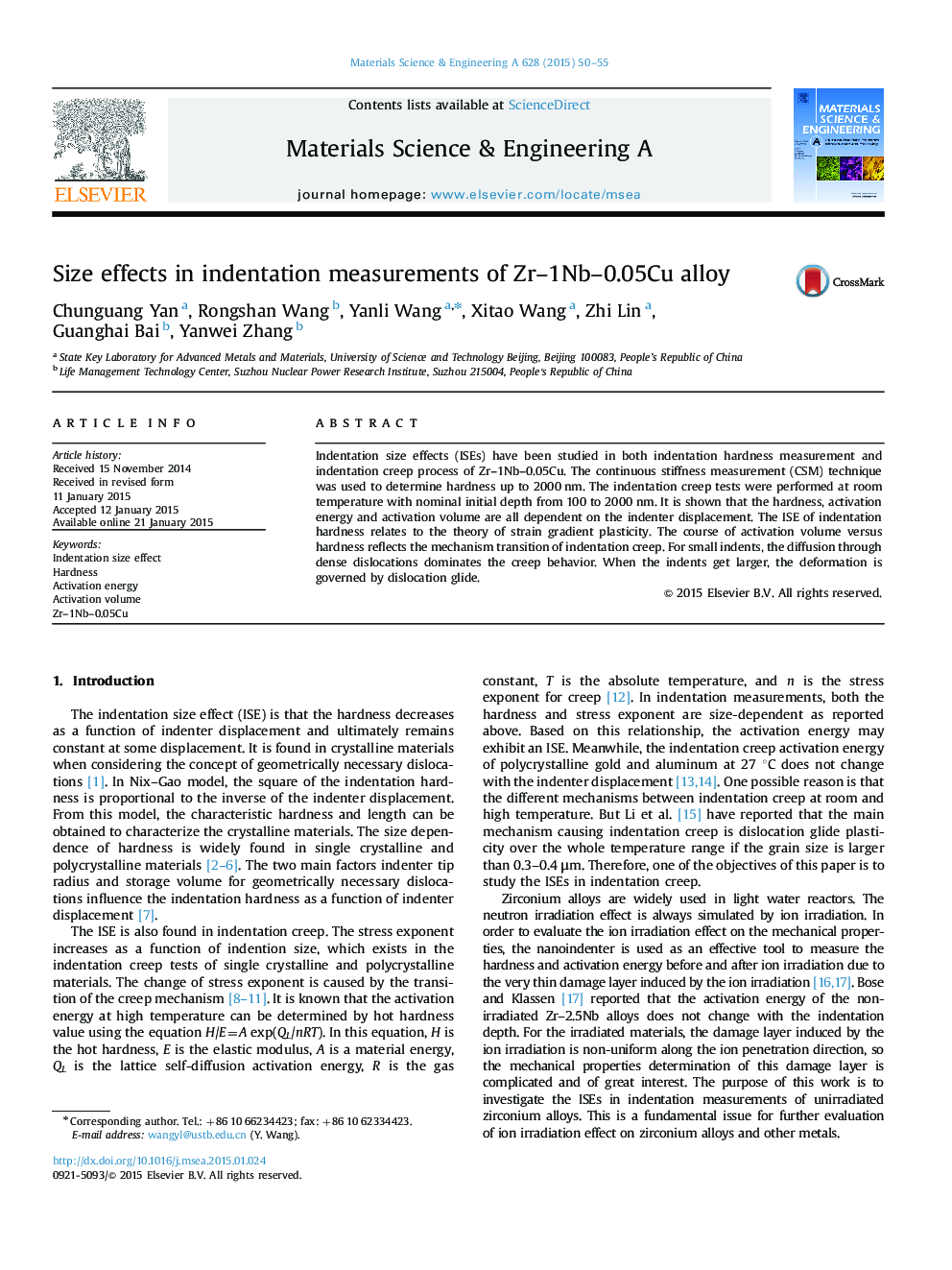| Article ID | Journal | Published Year | Pages | File Type |
|---|---|---|---|---|
| 7978259 | Materials Science and Engineering: A | 2015 | 6 Pages |
Abstract
Indentation size effects (ISEs) have been studied in both indentation hardness measurement and indentation creep process of Zr-1Nb-0.05Cu. The continuous stiffness measurement (CSM) technique was used to determine hardness up to 2000Â nm. The indentation creep tests were performed at room temperature with nominal initial depth from 100 to 2000Â nm. It is shown that the hardness, activation energy and activation volume are all dependent on the indenter displacement. The ISE of indentation hardness relates to the theory of strain gradient plasticity. The course of activation volume versus hardness reflects the mechanism transition of indentation creep. For small indents, the diffusion through dense dislocations dominates the creep behavior. When the indents get larger, the deformation is governed by dislocation glide.
Related Topics
Physical Sciences and Engineering
Materials Science
Materials Science (General)
Authors
Chunguang Yan, Rongshan Wang, Yanli Wang, Xitao Wang, Zhi Lin, Guanghai Bai, Yanwei Zhang,
